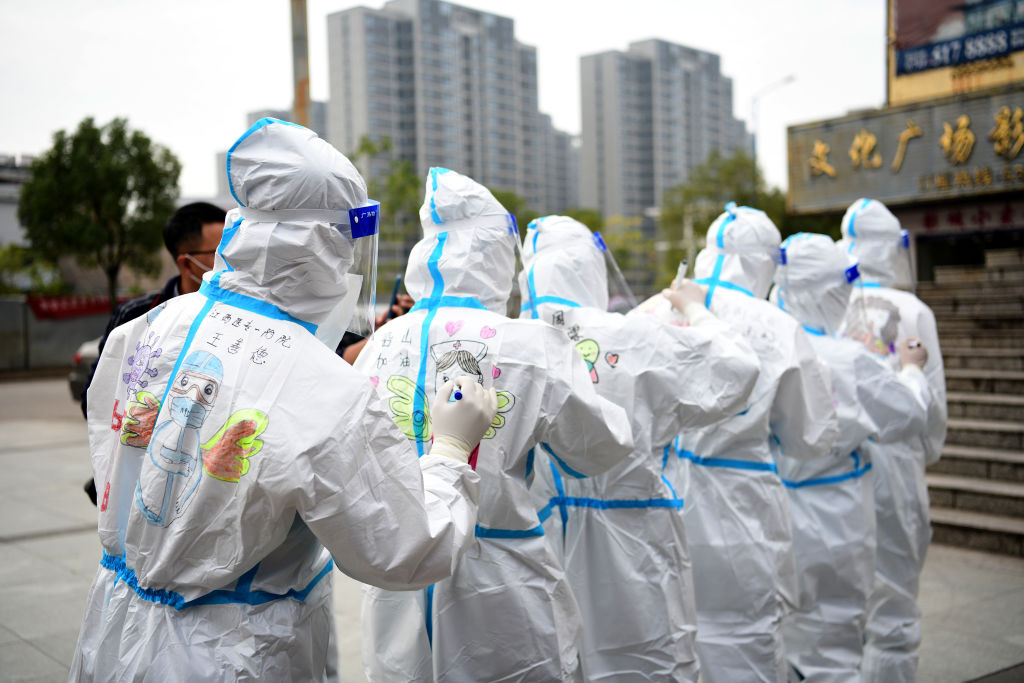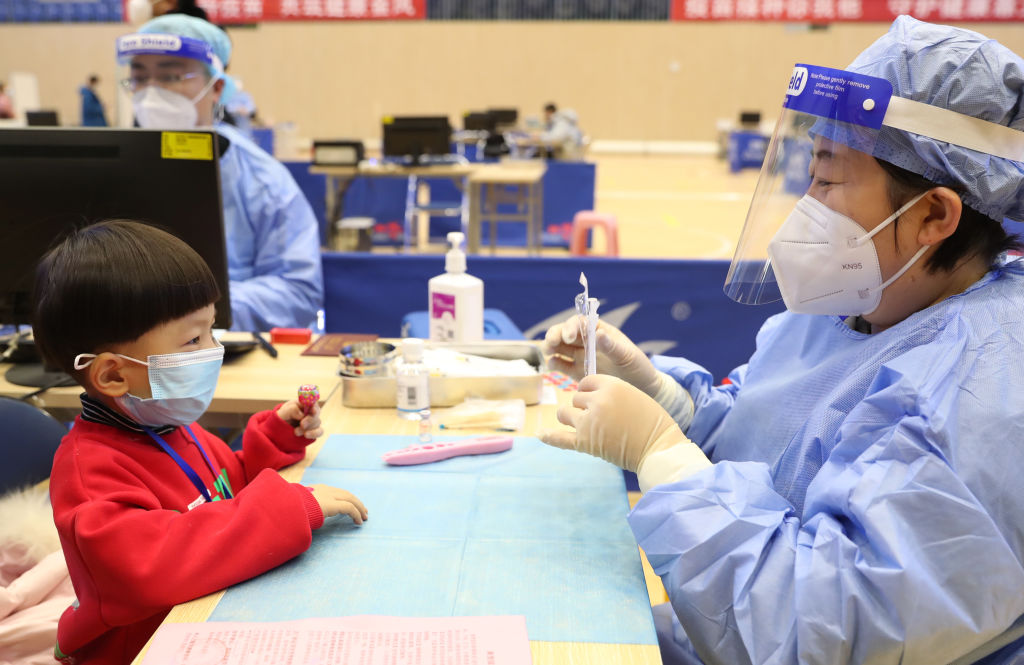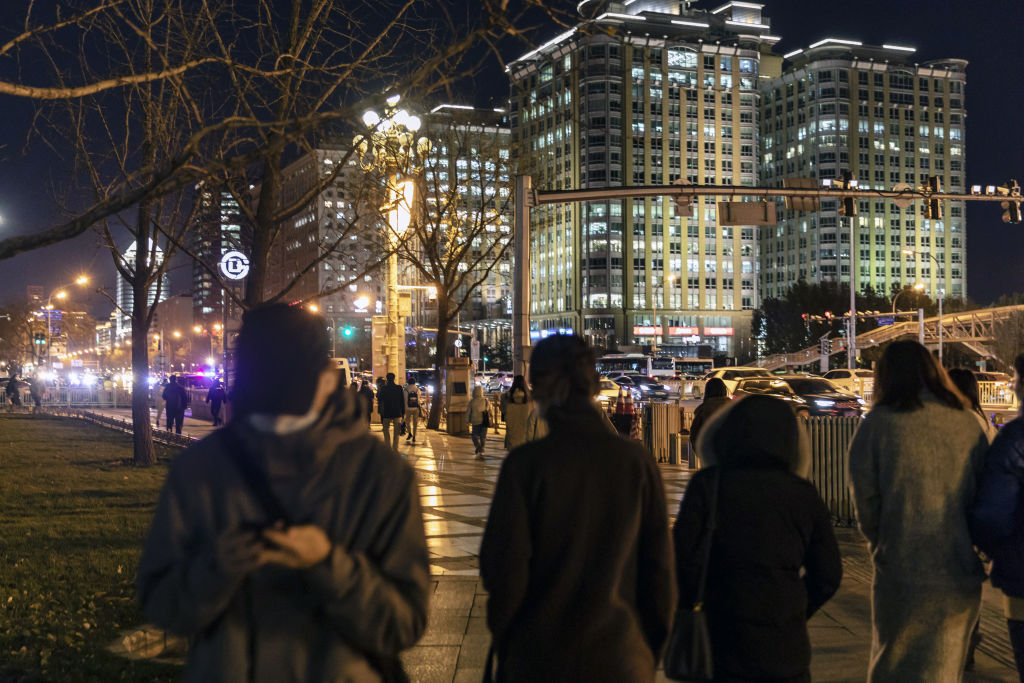Countries across the world scrambled this week to impose border and travel curbs after the new omicron variant emerged. In China, it was business as usual.
While scientists race to figure out whether the Covid-19 variant first sequenced in South Africa will pose a bigger problem than the highly infectious delta strain, countries ranging from the U.K. and Israel to Japan erred on the side of caution. They put in place preemptive defenses and travel restrictions designed to keep the variant out, rather than betting on omicron being a flash in the pan. It’s a calculus Beijing didn’t have to consider.
The emergence of the highly-mutated form of the virus has provided some vindication for China’s Covid Zero approach, which saw the country close its border indefinitely at the beginning of the pandemic, and intensify its stringent curbs ever since. While other places pivot to living alongside the virus, China has prioritized weeding out every last infection, saying the health of the population is its main priority — and economic benefits will follow.

China’s COVID strategy
“Omicron is a booster shot for Covid Zero,” said Huang Yanzhong, a senior fellow for global health at the New York-based Council on Foreign Relations. “If Western countries are walking back on their reopening and closing borders, they’ll lose the grounds for accusing China of sticking to what they say is an unsustainable and incorrect approach.”
Other countries embracing travel and border restrictions anew raises questions about whether China’s strategy may offer a better defense from newly emerging variants, particularly in the early days when their risk isn’t fully understood and the guarantee of an exit from the Covid pandemic is far from certain. The country’s state-backed newspaper, the Global Times, already declared China the most likely place to avoid devastation from omicron.
While the verdict is still out on whether the startling genetic changes found in omicron justify the preemptive hunkering down, some analysts said China’s approach may offer benefits. Kinger Lau, a strategist with Goldman Sachs Group Inc., said the economic fundamentals and ongoing Covid curbs in the world’s second largest economy put it in a better position to face the new variant.
Read More: Do Current COVID-19 Tests Still Detect Omicron?
Still, the zero-tolerance strategy China is clinging to has come under growing criticism from abroad and at least partly from within, and goes well beyond rigid border closures to include a growing suite of disruptive curbs.
While it has shielded the world’s most populous country from the rampant infections and massive death tolls that have ravaged other parts of the world, Covid Zero has taxed China and its people, with the weekslong quarantines and re-entry procedures meaning they’re effectively locked inside the country.
It’s gotten harder, and less successful, over time. The handful of delta flareups that have emerged since May are requiring ever-more stringent measures to subdue. China is currently grappling with dozens of infections in a border town in its Inner Mongolia region, even as remnants of a previous outbreak continue to linger.

After vowing to keep out Covid, China doesn’t have many options. The country’s approach is a one-size-fits-all strategy, said Nicholas Thomas, an associate professor at the City University of Hong Kong who has edited several books on foreign policy and public health. The lack of efficient vaccines gives China little room to maneuver, he said.
The inactivated shots developed by the domestic firms Sinopharm and Sinovac Biotech Ltd. are less effective at preventing symptomatic infections than Western mRNA shots in studies, though they slashed hospitalization rates and deaths. Still, relatively little solid data on how these shots work against the delta variant has been published compared to their rivals in the West.
That’s one reason why China continues to double down on its zero-tolerance approach rather than rely on vaccination rates that top 75% of the population, cover children as young as three, and include widespread use of booster shots. It doesn’t have much confidence in what would happen if it eased those curbs, analysts say.
No countries have reinstated the same level of punishing lockdowns and curbs on personal movement that China continues to deploy, and few would try to impose the other measures in its arsenal like invasive searches and personal tracking. Even the new travel restrictions among countries trying to keep omicron out fall far short of those China uses to isolate itself from the broader world, where Covid continues to circulate.
Read More: The Omicron Variant Results from Inequitable Vaccine Access
The mitigation measures are having benefits that go beyond Covid. A study conducted by researchers in China and Hong Kong found that lockdowns enacted in the months following the virus’s emergence in Wuhan prevented 347,000 deaths unrelated to Covid.
The lower mortality rates were tied to the stringent curbs, including changes in behaviors such as mask-wearing and social distancing, that led to reduced air pollution, better hygiene and fewer traffic accidents, according to the study published in the journal Nature.
“The results suggest that virus countermeasures not only effectively controlled Covid-19 in China but also brought about unintended and substantial public health benefits,” the researchers said.

When will China’s borders reopen?
With more definitive data on omicron’s ability to wreck havoc likely to take weeks, more countries are expected to join the border-closing bandwagon. That shows other governments also are unwilling to take chances, rather than rely on science, says Jin Dong-Yan, a virologist at Hong Kong University. The travel curbs will be temporary if omicron turns out to be not much of a threat.
In China — where omicron is least likely to gain an immediate foothold given the curbs already in place — the variant could push back even further any timeline to reopen to the rest of the world, Huang at the Council on Foreign Relations said.
There is speculation leaders could start cautiously reopening after the Winter Olympics in Beijing, slated to begin in February. At that time, full vaccination rates will be higher than the current 75%, and more effective treatments are likely to be available, Huang said.
The variant could add to the case for postponing any reopening plans until after a major Communist Party summit that’s taking place in the second half of 2022 and is expected to solidify a third term for Chinese President Xi Jinping.
“Delta and omicron together represent a major threat to China’s health security,” Thomas said. “Without alternative solutions, China is effectively locked into this trajectory well into mid-to-late 2022.”
—With assistance from Jinshan Hong
More Must-Reads from TIME
- Donald Trump Is TIME's 2024 Person of the Year
- Why We Chose Trump as Person of the Year
- Is Intermittent Fasting Good or Bad for You?
- The 100 Must-Read Books of 2024
- The 20 Best Christmas TV Episodes
- Column: If Optimism Feels Ridiculous Now, Try Hope
- The Future of Climate Action Is Trade Policy
- Merle Bombardieri Is Helping People Make the Baby Decision
Contact us at letters@time.com